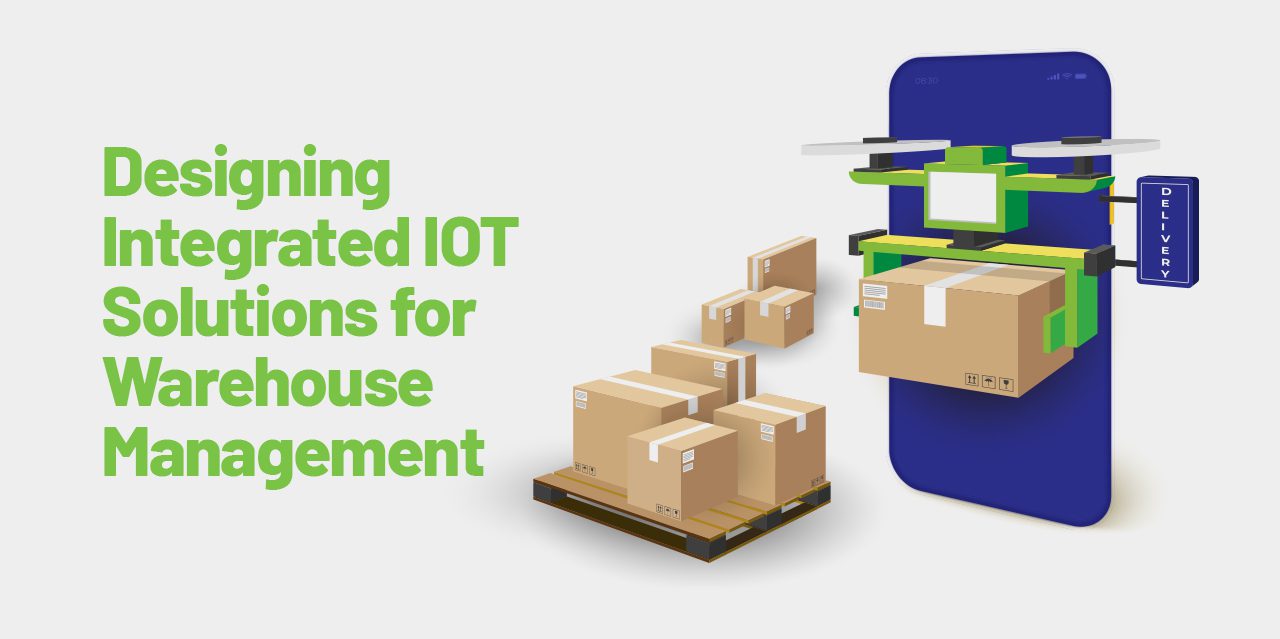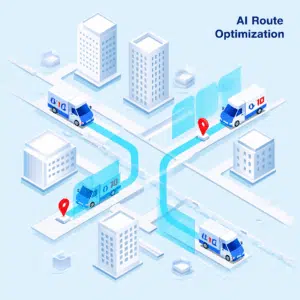The Industrial Internet of Things (IOT) has given warehouse managers access to a range of innovative technologies that can help them optimize their operations.
Businesses can improve efficiency, reduce costs, and improve customer satisfaction by integrating IOT solutions into their warehouse management system.
In this blog post, we will explore some of the key considerations for designing an effective IOT solution for warehouse management.
Are IOT Solutions Worth It?
Before diving into the steps that go into designing integrated IOT solutions for warehouse management, it’s important to understand why they’re so beneficial.
IOT solutions can provide a number of benefits for warehouses. For example, IOT systems can help improve inventory accuracy by tracking items as they move through the warehouse.
This can help reduce the time spent searching for misplaced items and minimize lost or damaged products.
IOT systems can also help increase efficiency by automating tasks, such as receiving and shipping orders. By automating these processes, businesses can save time and money while still providing high-quality service to their customers.
So in short, everything we’ll discuss in this post is worth your while. With a proper IOT system, your warehouse could reach its full potential.
Doing the Groundwork
First thing’s first, consider the specific needs of your business when developing an IOT solution for warehouse management.
The best thing to do is determine what you hope to achieve with the IOT. Common objectives include increased efficiency, increased accuracy, and cost reduction.
Once you have identified your goals, you can design a system that will help you achieve them.
Designing A System
Designing an IOT solution for warehouse management requires considering the various types of connectivity that will be required. In order to provide real-time data analytics, the system must be able to seamlessly integrate with existing systems.
Different types of IOT devices can be used in a warehouse environment, and each type has its own unique connectivity requirements. For example, some IOT devices may require a wired connection, while others may work wirelessly.
It is also important to consider the range of connectivity that will be required. Occasionally, IOT devices may only need to communicate with other devices within a short-range. Sometimes, IOT devices may need to communicate with other devices over a wide area network (WAN).
Finally, it is also important to consider security when designing an IOT solution for warehouse management. In a warehouse environment, it is important to ensure that all communications are secure and that data is not compromised.
Keep Everything Secure
Security is another important factor when designing an IOT solution for warehouse management. To prevent unauthorized access to your data, the system needs to be secure. It is also important to consider how the system will be used and who will have access to it.
Several factors must be considered when designing an IOT solution for warehouse management. By carefully planning your IOT implementation, you can ensure that your business enjoys all the benefits that IOT offers.
For security, there are a few key factors to consider. First and foremost, you need to make sure that your data is secure.
The communication between devices should be encrypted, and access to data should be strictly controlled.
You should also consider the physical security of your devices and data. This includes making sure that only authorized personnel have access to your warehouse and that all entry points are secure.
Last but not least, you should have a plan for dealing with any security breaches that may occur. By following these steps, you can ensure the security and reliability of your IOT solution.
Focus On Scalability
Scalability is another important factor to consider when designing an IOT solution for warehouse management. Your IOT solution needs to scale along with your warehouse as it grows.
Having a scalable IOT solution will help you meet the growing demands of your warehouse.
Something else to consider is the cost of implementing and maintaining an IOT solution when designing your warehouse management strategy. You don’t want to incur unnecessary costs or overspend on a solution that may not be necessary.
With these key considerations in mind, you can design a warehouse management system that is efficient and effective.
Conclusion
If you are considering implementing an IOT solution in your warehouse, it is important to work with a reputable provider who has experience designing and deploying IOT systems.
The provider should be able to assist you in assessing your needs and developing a system tailored to meet your goals. With the right IOT solution in place, you can improve the efficiency and accuracy of your warehouse while reducing costs.
IOT solutions can provide real-time data on inventory levels, shipping and receiving processes, and much more. This data can help you optimize your warehouse processes for better optimization.
They can also help reduce errors and increase productivity within the warehouse by tracking the movement of goods. By optimizing your warehouse with an IOT solution, you can improve your bottom line while keeping your business running smoothly.
Looking for the right software development partner? RTS Labs has helped hundreds of businesses of all sizes successfully develop the right outsourced custom software for many business needs. Get in touch with us today to learn more about how we can help.






